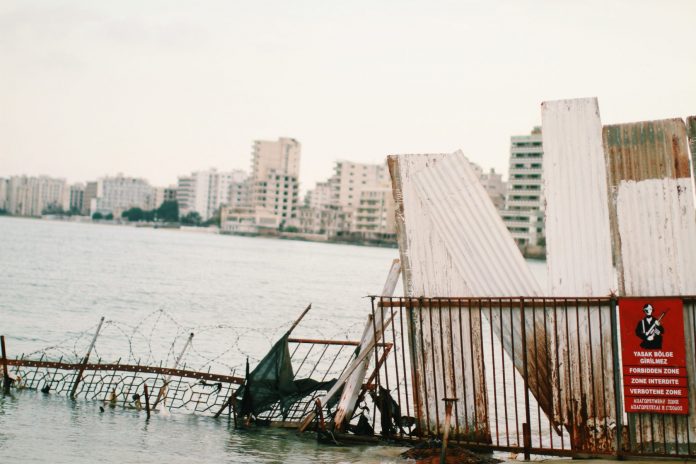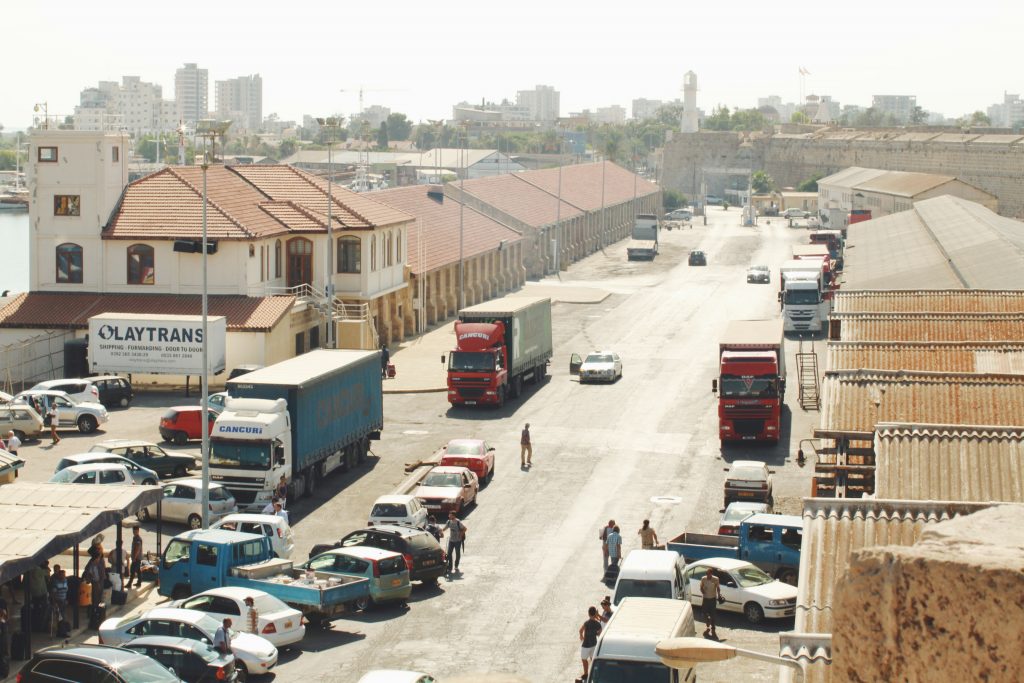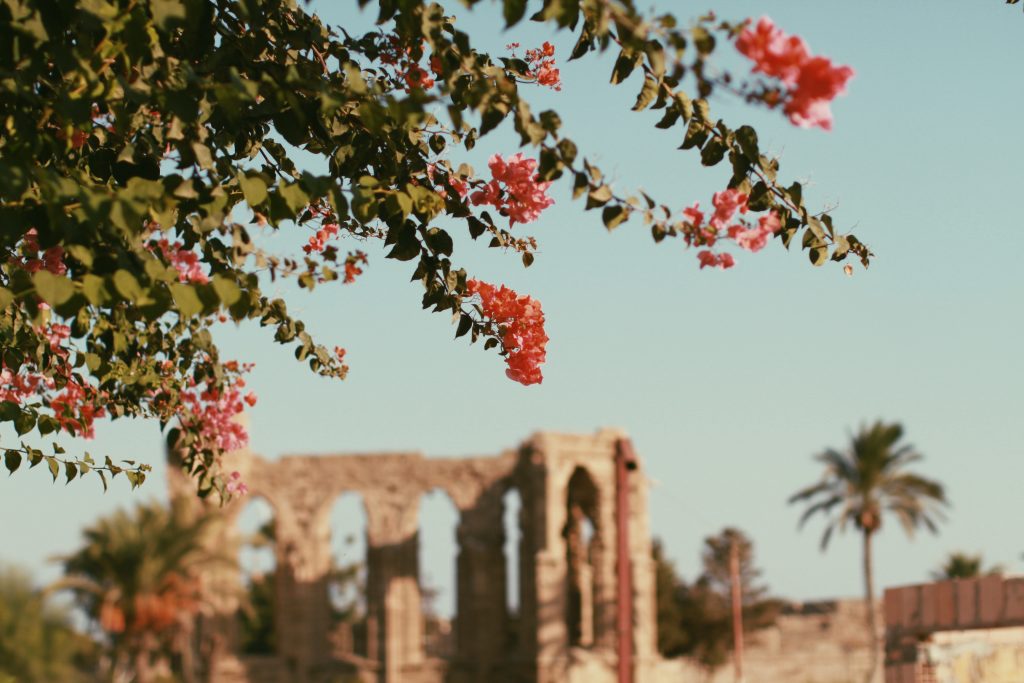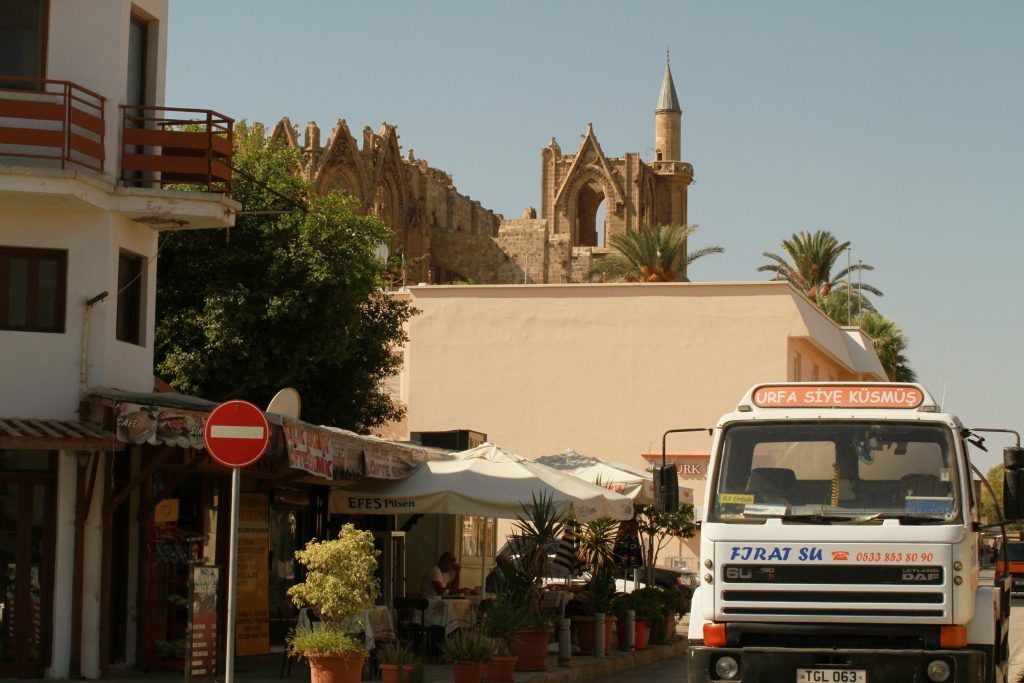
Bringing back the glory of Famagusta
By Nigel O’Connor
Photos Natasa Kleanthous
Ammochostos, meaning ‘buried in sand’, is the Greek name for Famagusta, a city where history’s sands drift across the barbed wire of military demarcation, passing through abandoned neighbourhoods of crammed seafront hotels and onto the fortified walls of the medieval old city. Within, Cyprus’ long history as a conduit for passing empires is recorded in its winding streets, revealing at each bend fragments and monuments to its eventful past and alienated present.
Standing among the houses, schools and businesses of today’s residents are 26 medieval churches – some largely intact, others crumbling ruins whose names are long forgotten. A short distance along the coast the ‘ghost city’ of Varosha, once a premier tourism destination in the Mediterranean, sits deserted by its inhabitants and is left to decay. Its eight kilometres of coastline are patrolled by a force of Turkish soldiers who have prevented people entering for 41 years. Behind these two extraordinary sights, a bustling new city of drab concrete maintains the flow of everyday routine.
A Silk Road trading empire
Having hosted the coronation of kings, borne brutal sieges and witnessed rebellions and bitter battles, Famagusta rose to prominence in the 12th century as a base for Catholic Europe’s continuing crusades to control Palestine. Feudal lords from France, claiming to be the kings of Jerusalem, were gifted the island by the Knights Templar who purchased Cyprus from Richard Couer de Lion, King of England.
The Gothic Cathedral of St Nicholas remains the center of the old city, but in 1571 it assumed minarets and the name Lala Mustafa Pasha Mosque with the Ottoman conquest. By that time Cyprus had become a wealthy and integral component of Venice’s maritime trading empire. The Ottoman period ended with the British Empire’s acquisition of Cyprus in 1878 before independence arrived in 1960.

Political separation
Plagued by regional geopolitics, independence was short lived and in July 1974 following an attempt to overthrow the Cypriot president launched by Greece’s right-wing military dictatorship, Turkish troops invaded the northern portions of Cyprus. On the afternoon of 14 August with Turkish tanks advancing on the city, Famagusta’s 40,000 Greek residents who predominantly lived in Varosha fled their houses and businesses. It has been 41 years on and they have not returned.
Accounts of the departed speak of food left cooking on stovetops and everyday items abandoned at a moment’s notice. It is reported that a Toyota dealership inside Varosha still houses a showroom of undriven 1970s vehicles. The political separation of Greeks and Turks, through the establishment of the internationally-unrecognised, Ankara-backed administration in northern Cyprus, has brought political isolation and economic embargo to Turkish Cypriots.
For young people that means limited opportunities for work and encouragement to leave. Hussein Aranir, 28, has seen many friends leave over recent years but says they do so reluctantly. “Life is good in Famagusta, everyone knows everyone. When you walk outside your hand is always up, waving to somebody you know,” he said.

“But growing up we compare Famagusta and North Cyprus to Turkey or Europe and we see less opportunities here than in those places. Most people who left didn’t come back. The restrictions of the military presence around the city makes life very difficult. Army bases are at all the beaches and around the city. For us it is 20 minutes to drive to the nearest beach to swim. This effects the availability of jobs and future of the city.”
Tourism strip abandoned
Prior to 1974, Famagusta served as the country’s busiest port, a center for business and one of the leading tourism destinations in the world. Its miles of soft-sand beaches, coupled with the Mediterranean’s turquoise waters, drew thousands of tourists annually throughout the 1960s and up until the Turkish invasion. Celebrities such as Elizabeth Taylor, Burt Reynolds, Raquel Welch and Paul Newman could be seen holidaying and soaking up the sun at Varosha.
Today, the embargoed port sees a trickle of activity and few tourists leave the beaches of southern Cyprus to venture through the checkpoints into the north. On a beach adjacent to Varosha, a small bar operates in the shadow of the abandoned and once glamorous district. White deck chairs sit next to a bordering fence made from rusting sheets of tin and netting. Behind, a portion of Varosha’s hotel strip is visible and a military watchtower overlooks the few people who come to swim at the beach or observe the ghost city.
Soldiers direct the curious not to take photographs. Some of the visible buildings are bomb-damaged, others partially collapsed through decay. Flocks of birds move about the windowless high-rise apartment towers and hotels while waves lap at the empty beach. At the fence the only sounds coming from Varosha are the wind and the scraping of metal.

The city must live again
Born in 1964, Dr. Okan Dağli remembers a time when Greek and Turkish Cypriots shared a community and common identity. “Famagusta was such a busy place,” he recalled to ASIAN Geographic. “We were living together – working and socialising.”
Now advocating through civil society for the return of Famagusta’s Greek residents and the protection of the city’s heritage, Dr. Dağli expresses frustration at his city’s losses.
“We are one of the unluckiest cities in the world – one side of it is living and the other side is not,” he lamented. “There are other divided cities or ghost cities in the world but here it’s half and half of each. After 40 years the city must live again. The lands where the Greeks were living must be given back to their legal owners.”
Currently, with negotiations ongoing between Greek and Turkish Cypriots over reunification, hopes are high for a political solution to the separation. In October, at a meeting updating Greek Cypriot refugees on the progress of the talks, the mood was optimistic of a return.
“Young people need the chance to live a normal life. They deserve it,” Alexis Galanos, the mayor of Famagusta’s municipality in exile told the crowd. “Time is not offered for any more games. Now is the time. We need to remove the curse of division.”
For more stories and photos, check out Asian Geographic Issue 115.










